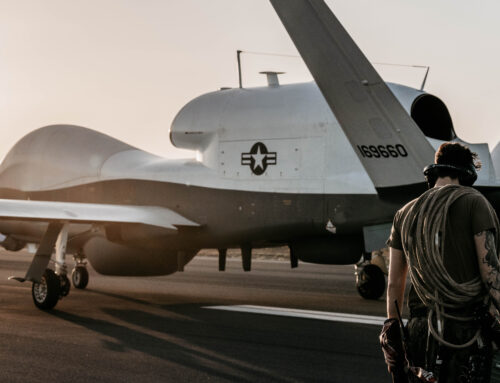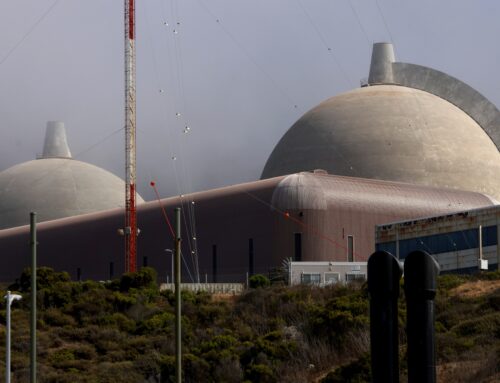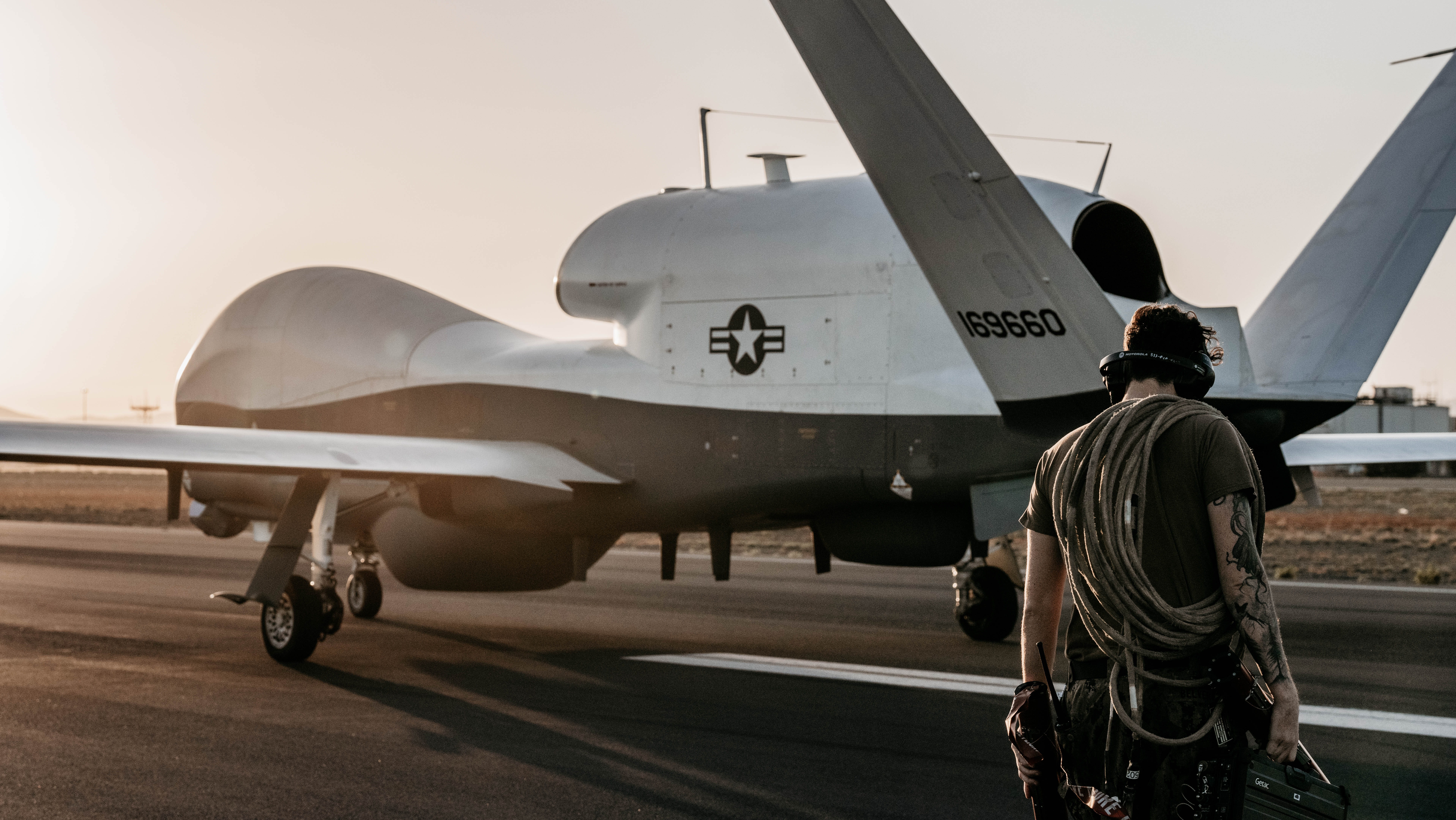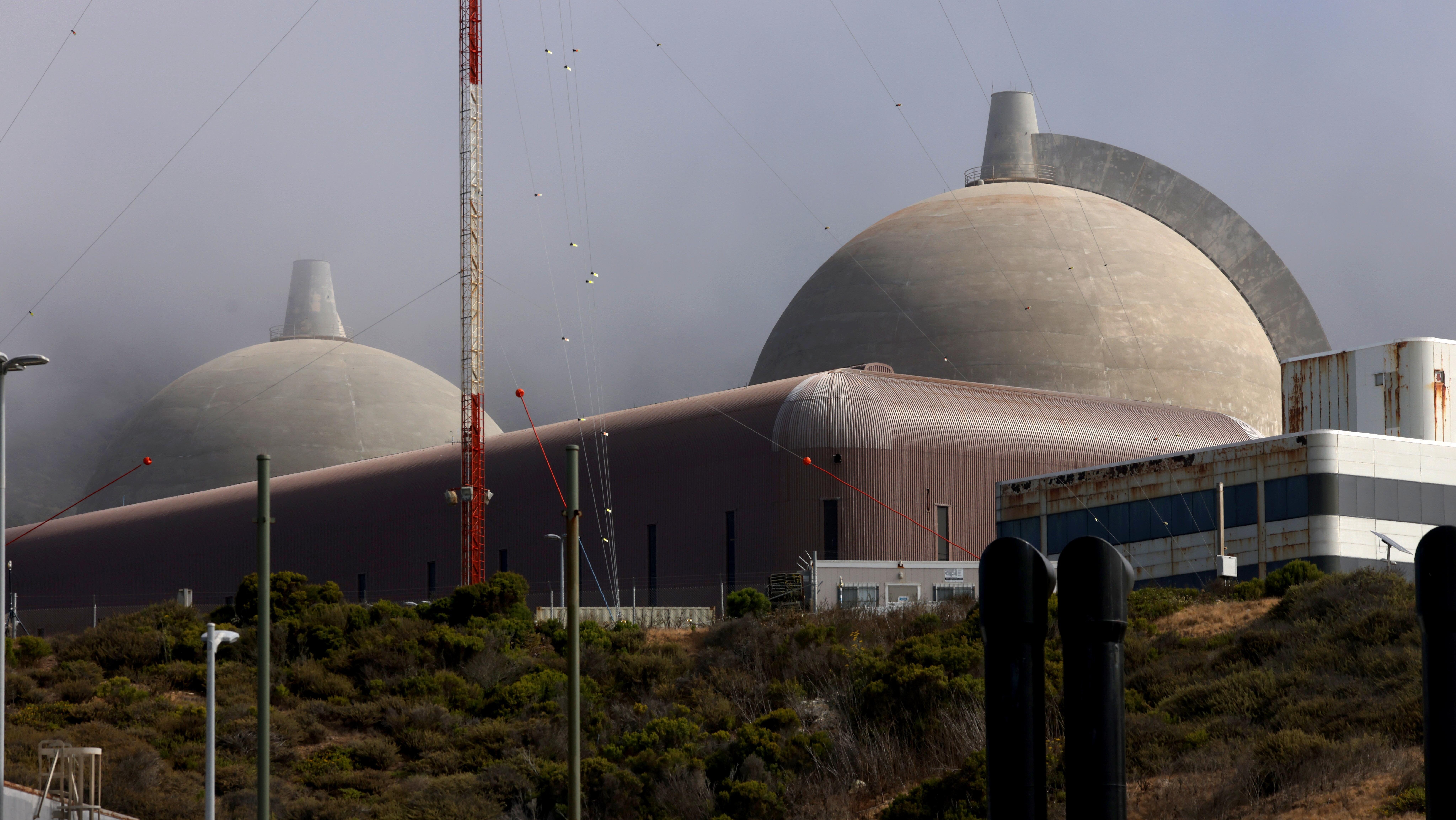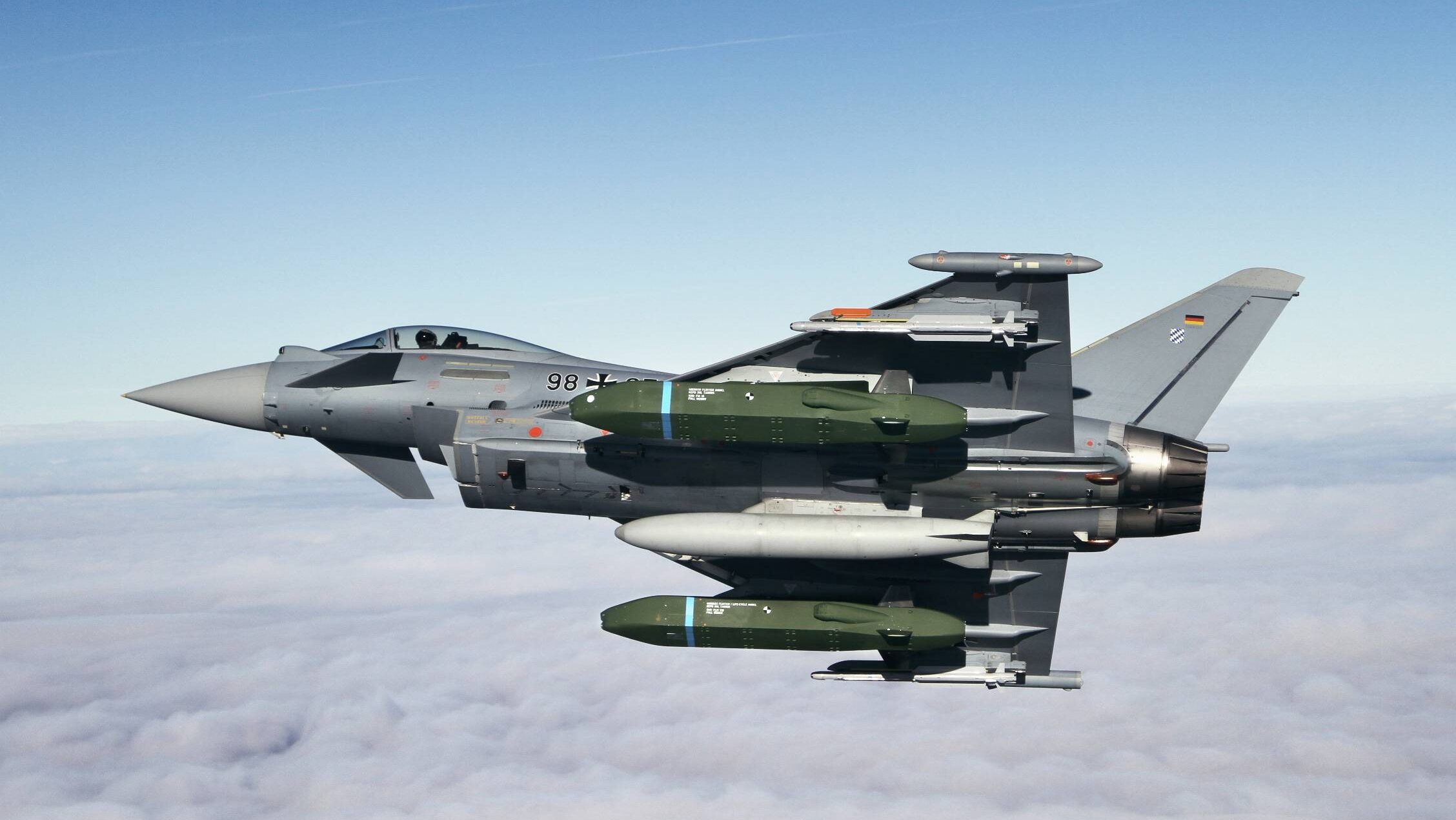A view of the Pentagon with financial charts in the background. (Graphic Breaking Defense, original images via Getty)
WASHINGTON — When inflation soared in the wake of the pandemic, the defense industry emphatically warned the Pentagon of a problem: Climbing prices had begun pushing key projects across the military well past their planned budgets, raising the risk of those programs coming up short.
So industry turned to Congress for a bailout, and lawmakers obliged. As part of the fiscal 2023 spending deal, Capitol Hill earmarked approximately $1.05 billion to offer relief to a range of projects across the Pentagon for “revised economic assumptions.” And then, for much of the public, the money dropped off the radar, as selected projects were bundled in a trove of reprogramming documents [PDF] submitted to lawmakers with largely no explanations given for why, or how, those programs were selected.
But a previously unreported document sent to Congress and obtained by Breaking Defense, along with new interviews with Pentagon officials, analysts and industry figures, reveals how the Defense Department determined which high-priority programs were worthy of the taxpayer aid — and what would happen if they didn’t get it.
“At the end of the day, we had a good bit more than a billion dollars’ [worth] of people who had their hand up,” DoD Comptroller Mike McCord told Breaking Defense in an interview at the Pentagon. “So we had the Army, Navy [and] Air Force, who have most of the contracts, also identify priorities from their perspective of what they thought the worst problems were, which was helpful for us.”
Of the 68 total projects selected for relief, 13 received over $10 million, 35 received between $1 million and $10 million, and the remaining projects were awarded less than $1 million. The top five programs by dollar amounts pulled in three quarters of the $1 billion pot, infusing cash into large-scale purchases of platforms like ships, fighter jets and helicopters.
The leading recipient of relief was the Navy’s Constellation-class frigates, built by Fincantieri Marinette Marine, at a combined $310 million. That included two different pools of money: $222.8 million to cover expenses for ships FFG 62, 63 and 64, as well as a second $86.8 million payment for FFG 65.
Todd Harrison, a defense budget expert at the American Enterprise Institute, noted that one reason shipbuilding topped the list was likely because of the peculiarities of naval procurement.
“You can’t buy half a ship,” Harrison said. “Once the cost goes up, if you don’t have the full amount, you can’t order it.”
In second place was the Air Force’s new F-15EX built by Boeing, which received $154.4 million to help procure the fourth production lot of the fighter jet.
In third was the Navy’s Expeditionary Sea Base (ESB) program, whose prime contractor is General Dynamics NASSCO, which was allocated $107.4 million to finance shortfalls in ESB 7 and ESB 8. NASSCO’s John Lewis-class fleet replenishment oiler nabbed the fourth-place spot, garnering $102.4 million to spread across T-AO 206, T-AO 207, T-AO 208, T-AO 209, T-AO 210, T-AO 211 and T-AO 212.
And rounding out the top five recipients was the Army’s AH-64E Apache attack helicopter, also made by Boeing, which received roughly $93.9 million to help purchase five additional aircraft.
An analysis of program justifications shows the Pentagon viewed different forms of rising prices in the chaotic post-COVID environment as qualified examples of inflation, from the cost of materials to labor market competition driving wages up.
“This isn’t just about value, it’s about national security,” Harrison said regarding the inflation relief. “Congress appropriated money to buy these weapons systems in these quantities for a reason, and we want to make sure that the quantities are actually bought that were deemed appropriate by Congress.”
How the Pentagon spent more than $1 billion in inflation relief funding, by program, according to a 2023 DoD Comptroller report. (Graphic by Breaking Defense)
How The Relief Worked
Congress set aside the $1 billion-plus in inflation relief in Section 8121 of the fiscal 2023 defense appropriations bill, but not without some consequential caveats. The money had to be disbursed that fiscal year, for instance, a challenge since a continuing resolution had pushed the start of the spending period back three months. Also, the funds could only be spent on procurement and research initiatives.
“I would have loved to have been able to do it a little differently, maybe, but with the time constraints and the criteria, the people who showed up” — and met the Pentagon’s requirements — “got a little more than other people did,” McCord said.
According to an Air Force spokesperson, McCord’s office reached out and asked each of the military services to provide candidates for relief, with the understanding that funds had to be used by the end of FY23. McCord’s office then “determined the final allocation between Services,” the spokesperson said, who in turn provided the relief funds to their specific programs. (Representatives for the departments of the Army and Navy did not respond to questions from Breaking Defense by press time.)
One critical factor in the process was whether contracts were previously negotiated with provisions to raise prices in the case of inflation, according to McCord. Many programs in the Pentagon’s inflation report, as well as examples in reprogramming documents, cite increases under economic price adjustment (EPA) clauses — contractual arrangements that enable industry to raise prices when costs increase. EPA clauses also empower the government to negotiate lower prices in the event costs fall.
“The contract needed to be structured in a way that an inflation adjustment was payable,” McCord said of programs eligible for relief. “They had a contract that had contemplated a problem like this.”
With inflation mostly staying low since the 2008 recession, McCord posited that many defense companies had not sought out contracts with clauses that would protect against a sharp upswing in costs prior to the pandemic. Such clauses, like EPA provisions, are regularly written into shipbuilding contracts due to the oscillating price of raw materials like steel that can greatly affect the cost of the ship — a key reason why several of those programs carried the day in terms of raw dollars.
“[T]heir contracts were written in a way that was very amenable to identifying price escalation,” McCord explained. “And some contracts just are not written that way.”
However, the EPA issue wasn’t a dead end: A provision in the FY23 defense policy bill enabled the Pentagon to simply modify existing contracts to provide them more money, even if they didn’t have clauses like EPAs, according to the Air Force spokesperson. That is how the B-21, Northrop Grumman’s new stealth bomber, was able to take advantage of $60 million in relief funds previously disclosed by the company, though it’s not clear what other programs may have benefited from the same process. Northrop referred questions to the Air Force.
The change in the FY23 NDAA further directed that primes could apply for relief themselves or seek it on behalf of their subcontractors; subcontractors could apply directly too. But how much money filtered down to subs from the primes is difficult to identify.
Under Secretary of Defense Comptroller Mike McCord speaks during a press conference presenting the 2021 Department of Defense’s audit results, the Pentagon, Washington, D.C., Nov. 15, 2021. (DoD photo by U.S. Air Force Staff Sgt. Brittany A. Chase)
From Industry, Few Specifics on Inflation Relief Dollars
The Pentagon’s inflation report identifies specific programs that received money, though it rarely tracked exactly how inflation relief was spent on the program, where it ended up in the supply chain and who, ultimately, benefitted the most — largely because the Pentagon doesn’t necessarily know, according to McCord.
“We don’t have the visibility to say, if I gave Lockheed or Boeing $10 million, how much of that flowed to a small business,” he said. “I would have liked to have had perfect information to know how much of this billion dollars went to small businesses. But in terms of straight from us to a small business, it wasn’t a large amount, unfortunately, [or] as much as we would have liked.” (Boeing declined to provide a comment for this story.)
Breaking Defense reached out to the prime contractors whose programs received a total of $10 million or more in inflation relief, as well as all companies otherwise mentioned in this story. By and large, those companies declined to provide specific data on how much relief funding was accepted by the contractor and how much filtered through the supply chain.
In some cases, like a $9.4 million award for Freedom and Independence-class Littoral Combat Ships (LCS), payments appeared to be straightforward EPAs to prime contractors to account for rising costs of factors like labor and materials. In such examples, the relief likely moved through a tangled web of primes and their suppliers that can include other major businesses as well as small mom-and-pop shops.
In other cases, prime contractors may not have even played as prominent a role in the inflation relief process. For example, the Pentagon’s report cites soaring costs of government furnished equipment (GFE) for the Constellation-class frigates — something prime contractor Fincantieri has little, if any, control over. The document specifically calls out GFE like the Aegis combat system built by Lockheed Martin, suggesting that much of the spending for the Constellation program ultimately went to Lockheed, not Fincantieri. And like in the LCS example, it’s not clear how much of that money may have gone to Lockheed’s major partners and subcontractors on Aegis.
Fincantieri spokesperson Eric Dent confirmed the company did not receive inflation relief for the GFE on the Constellation-class, though he referred further comment to the Navy. On the Freedom-class LCS, which Fincantieri builds, Dent referred questions to Lockheed, which is the prime contractor.
A Lockheed Martin spokesperson said that the company is “regularly monitoring inflationary risks in active and future contracts so we can continue affordably delivering for our customers,” but referred specific questions to the Defense Department.
Austal, which builds the Independence-class, did not respond to a request to comment.
Only a tiny fraction of the total relief — $9 million — was awarded directly to small businesses, according to the Pentagon’s report.
How the Pentagon spent more than $1 billion in inflation relief funding, by service, according to a 2023 DoD Comptroller report. (Graphic by Breaking Defense)
Why The Money Matters
In many cases, documents say the money functioned as a way to restore DoD’s buying power back to expected levels. For example, rising prices for RTX’s Advanced Medium-Range Air-to-Air Missile (AMRAAM) meant that the Air Force needed an additional $13.6 million or would otherwise be forced to buy 14 fewer copies of the high-demand weapon, according to the Pentagon’s report. (The contract mechanism used to seek the relief isn’t clear, and RTX declined to comment.)
Documents suggest ongoing contract negotiations got a boost from the inflation relief pot as well. In the case of the Apache, the Pentagon’s report cites the “timing of negotiations” with Boeing for the attack helicopter’s multi-year contract. Boeing’s contract negotiations with the Pentagon for the F-15EX also benefited from the relief: Based on prior cost growth in the program, the Air Force anticipated Boeing’s forthcoming proposal for the fighter jet’s fourth production lot would result in the service only being able to afford 21 of 24 expected jets.
For a few projects, the relief funding helped protect nascent research and development efforts, such as a $5.6 million award for the Off-Board Sensing Station (OBSS) drone for the Air Force. In justification documents, the Pentagon said officials would not be able to complete flight demonstration of the platform without more funding due to higher labor and material costs eating away margin on the program — explicitly listing several subcontractors who would be provided relief in the process — which is viewed as a key effort that will feed into the service’s Collaborative Combat Aircraft endeavor to build drone wingmen.
OBSS prime contractor General Atomics declined to comment directly on the inflation relief and referred questions to the Pentagon.
The levels of inflationary impact varied based on the root cause of the cost increases, with some programs stating that certain costs had ballooned by more than half. The Pentagon’s report cites a 49 percent increase in container costs for 155mm munitions, which ultimately spurred a $300,000 award. (155s are made by multiple contractors, and it’s not clear who the prime may have been in this case.)
A total of $62.4 million was provided for the Armored Multi-Purpose Vehicle program, led by prime contractor BAE, due to a projected 50 percent increase in material costs, the report says. And justification documentation for the ESB, where General Dynamics NASSCO is the prime contractor, cites a 134 percent growth in the price of steel, 54 percent growth in long distance trucking and 47 perfect growth in copper.
General Dynamics referred questions to the Navy. BAE Systems referred questions to the Army.
In order to vet industry’s claims of rising prices, contracting officers would evaluate revised pricing proposals “under standard cost and pricing procedures to ensure the cost was fair and reasonable,” the Air Force spokesperson said.
One of BAE’s two AMPV varients on the show floor at AUSA 2024, this one sports the company’s Modular Turreted Mortar System. (Brendon Smith / Breaking Defense)
Lessons Learned
Industry ultimately viewed the $1 billion relief fund as a critical damage reduction measure, but one that couldn’t completely mitigate the $110 billion loss in buying power caused by inflation from FY21 to FY23, said David Norquist, a former deputy defense secretary and comptroller who currently is president of the National Defense Industrial Association. (NDIA was one of the organizations that advocated for inflation relief to be injected into the FY23 budget.)
“From the point of view of industry, you didn’t solve the problem, but it certainly helped key programs and particularly their supply chain,” Norquist said.
“It was a step in the right direction. And when you’re dealing with Congress, you always appreciate when they take the step in the right direction,” he said. “There’s never enough time or money to solve everything. And the answer is, that’s okay, we do what we can.”
RELATED: Tired of being ‘shock absorber’ on inflation, defense industry wants new protections: AIA chief
Richard Loeb, an adjunct professor of government contract law at the University of Baltimore School of Law and former official at the Office of Federal Procurement Policy, said that while much of the relief process reflected standard business practices, taxpayers should be vigilant about whether dollars were handed out carefully and with good judgment in cases where programs may have gotten inflation relief due to the special congressional carveout.
“I think that there’s a heightened concern that we don’t just turn fixed-price contracts into cost-type contracts,” he said.
“The parties chose a fixed-price contract, and now basically they’re saying, because they’re losing money, they want it to be cost-type,” he said. “The big issue, I would say, is we’re engaging in risk-shifting” in cases where the carveout could be applied.
Harrison argued that the inflation relief did not adequately cover all Pentagon programs and that the fiscal environment forced some efforts to cover rising costs “out of hide,” which in turn would require another round of targeted inflation relief issued in the form of a supplemental spending package. Still, he didn’t view such a package as likely to succeed.
“The appetite for trying to help the defense industrial base catch up from inflation, I think that may have passed,” he said.
Loeb, Harrison and Norquist also agreed that the experience would likely shape contracting practices going forward.
“I definitely see [contracts] using more EPA clauses,” Loeb said. That trend, he added, should cause the Pentagon to scrutinize whether it would be more appropriate to use cost reimbursement-type contracts instead of fixed-price contracts in certain instances.
The high inflation of the last few years, and industry’s attempts to ameliorate the issue, “adds another variable to all of these contract negotiations, where the companies either have to seek this kind of a clause added to their fixed-price contracts or companies simply have to factor in the risk on their own,” Harrison said. “So I think that’s going to be at the forefront of people’s minds now when they’re negotiating contracts.”
Norquist added that while top Pentagon acquisition officials such as Bill LaPlante, the undersecretary of defense for acquisition and sustainment, understand the pressures that industry is under, contracting officers sometimes simply do not have the budget to build in inflation protection clauses that reflect the risks that defense contractors are facing.
McCord acknowledged the relief funding wasn’t a panacea for industry, but stressed that much of the defense budget — from the topline established by the White House to the final appropriations approved by Congress — remains out of the Pentagon’s direct control.
“As we work through the budget, we work internally to fix problems where we can move money around. And then, when the [congressional] committees give us an opportunity, we go to them with some problems,” McCord said.
“But the more well-defined our problems are, and the more scope, the better we do.”





